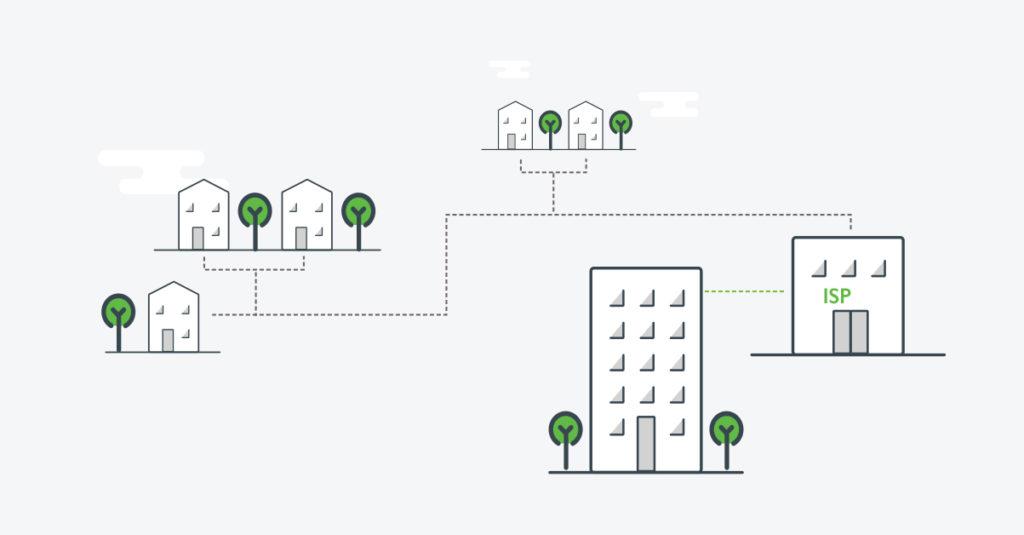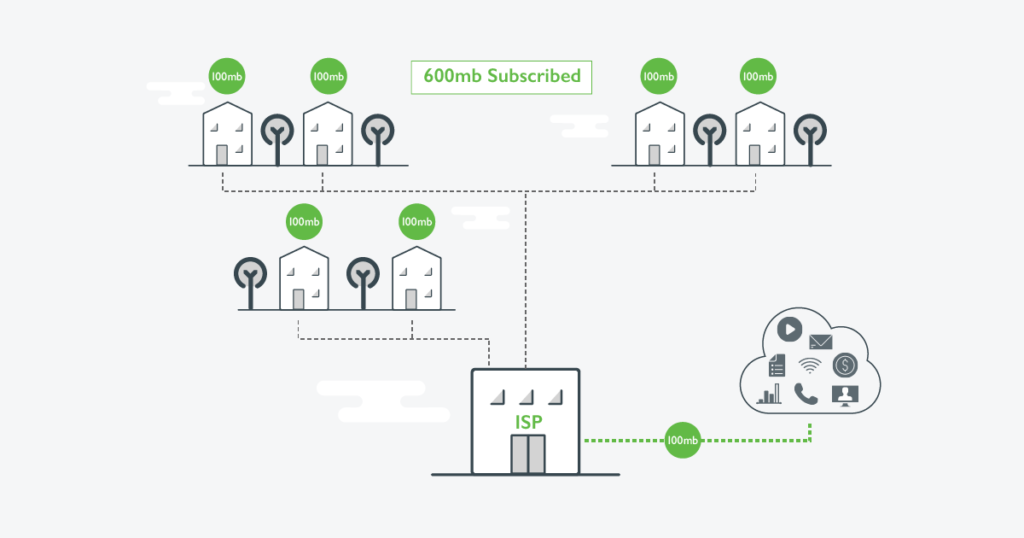
Even before COVID-19 sent people home to work, the trend was clear: an increasing number of workers were using home internet connections for business. Over the last five years, the number of remote workers has grown 44%. There is no sign that the trend will slow. With COVID-19 restrictions affecting many businesses, there has been a huge surge in remote workers. Home internet connections that were once nearly abandoned from 8:00 am to 5:00 pm are now flooded with Zoom, Microsoft Teams, Slack, Bluejeans, Office365, email, and VOIP traffic.
This increase in the amount of traffic on residential internet circuits is showcasing problems caused by oversubscription and network congestion. This has suddenly highlighted a topic that most people never really had to think about before now: a home internet connection is different from your connection at the office. Why is this, and how is it affecting the user’s internet experience?

You aren’t commuting, but your data is
Remote workers’ new commute distance might be a 20-foot hallway to the spare bedroom, but once they open their laptops and log in, their data has to travel a more complicated route. Due to geography, logistics, and economics, most residential areas are connected to the internet differently than business areas.
With a residential connection, data is being routed down residential streets and across neighborhoods. Residential areas are typically located far from internet backbones, which means there’s a lot more cable to cover with far less regular maintenance and upgrades.
All the devices and junctions that stand between an individual home and the ISP’s connection to the internet backbone are more points where things can go wrong. Whether copper, broadband, or fiber optic, more cable and connections degrade the signal in ways that can delay and scramble traffic. For the home user’s internet traffic, that translates to more potholes, red lights, and mysterious traffic jams on the Information highway.
Businesses typically install more robust fiber connections and more expensive services like frame relay, MPLS, and metro ethernet. Plus, businesses tend to be closer to ISP network points of presence, which means there are fewer connections and cable to pass through. In addition, ISPs provide service level agreements (SLAs) for businesses, promising uptime, speed, and quality of service. A business connection doesn’t involve as many changes in media, shared resources, or weather-beaten equipment.
Another major difference between residential and business internet connections is the ratio of downstream bandwidth to upstream bandwidth. Business connections tend to offer symmetrical or near-symmetrical service with the same speed for download and upload. Residential connections, on the other hand, are typically asymmetrical, favoring high download speeds for streaming video, games, media consumption, and other download-heavy usage patterns. Luckily, most business users at home will not experience problems with asymmetrical connections unless they are regularly uploading large files or otherwise pushing out a lot of data.
Residential oversubscription
Everybody loves it when their commute is free of congestion, but most would agree that it would not make any sense to build a freeway to every driveway. We build smaller, residential streets where the traffic demand is not that high. These feed into freeways that have much higher capacity. ISPs provide access to the internet for all their subscribers in much the same way.
When a customer signs up for a 100 Mbps ISP modem service, they are not buying a dedicated 100 Mbps pathway all the way from their home to the ISP’s network. Instead, ISPs oversubscribe residential networks, using historic data to understand what the average usage is across their subscribers. Since residential customers can rarely afford their own dedicated business lines, ISPs work to reduce residential internet costs by supporting only the usage they expect to see.

When there isn’t a sudden surge of people working from home all day, oversubscription is a cost-effective plan that provides more than sufficient internet bandwidth for all of their residential customers.
Oversubscription contributes to many bandwidth problems that business users will face on residential internet connections. At peak usage times, oversubscribed circuits hit maximum bandwidth and the end users will quickly notice. When the shared residential network is maxing out because of oversubscribed bandwidth promises, that will manifest for the end user as latency, jitter, lag, and poor connection times.
The long and the short of residential internet woes
Residential internet connections – whether cable, DSL, or even fiber – are in reality shared connections that are typically further away from central ISP internet hubs. Business connections, on the other hand, tend to be dedicated connections that are closer to central ISP hubs. The shared, distant connections lead to lower reliability, unpredictable speed, and greater number of glitches for residential internet service.
With automatic QoS, high reliability peering, and informative monitoring, learn how Bigleaf Home Office optimizes home internet for business.







